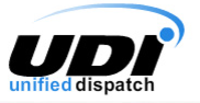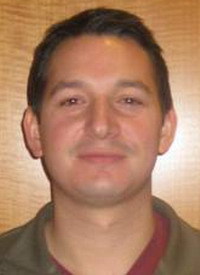Thursday, October 20, 2011
Interview with Dan Tamkin, Unified Dispatch

It's a story you hear too many times: a venture or angel funded firm just can't figure out its business, runs low on cash, can't get another round of funding, and soon all that's left is a few chairs and servers. However, every so often, you hear about a firm at that point, which is able to turn around, build a sustainable business, and is eventually sold for a positive return. That's the story at Altadena-based Unified Dispatch, which was recently sold to the On-Demand Division of Veolia. The firm's CEO, Dan Tamkin, tells us the story.
How did you end up at Unified Dispatch?

Dan Tamkin: I was brought in by some of the venture capitalists and angels behind Unified Dispatch, after I did a prior company turnaround at Computer Motion, the first medical robotics company, where I had been CFO, and which had just been sold. I became the CFO at the old Unified Dispatch, which over time, had raised $4.5M to create call centers for ground transportation. The idea was they were going to create their own interactive voice response (IVR) technology, which we would keep in house and allow us to open up a nationwide call center to handle taxi calls. Back in 2003 and 2004, we were focused on the international market, and started outsourcing to India and the Philippines for call center services. The original company found that getting IVR deployed was actually very hard. We also found that our customers didn't want to outsource their calls overseas, because they were worried that people calling for transportation services would either be offended, or find it hard to communicate with people speaking with an accent. That resulted in the company being left in limbo. The company went out to try to raise another round of funding, and was just not seeing much interest from venture capitalists. Plus, they'd been bumping around for three or four years, and by then it just didn't make much sense for the original founder, Ted Sichelman--or much of the original team--to continue. The company was facing a straight shutdown, where it would just be sold for its assets.
In addition, the investors decided they were just tired of their investment, and wanted to move on. Most of the board was from the Tech Coast Angels and Pasadena Angels, and while they are good people--and frankly, from their point of view--it made sense not to nurse it along in their portfolio when a company isn't going to make it. So, I went to the board, and told them I was willing to buy the thing out. Me, and a few other people, restarted it from scratch. We ended up buying Unified Dispatch Inc. through Unified Dispatch LLC, a new company. We kept the name in order to save money and time by not having to go through a rebranding effort.
So how did you take the company from nearly shut down to building a new business, and actually selling it?
Dan Tamkin: There are tactics and strategy. In terms of tactics, we went from 20-odd people at the company to just three people, myself and two developers. We had a lot of full time developers who were young and talented, but hadn't been given direction. So, we slimmed down the team, and focused intently. We decided to focus on taxi IVR, and shut down all of our other projects, in dental IVR and other verticals. We said--look, taxi is our break and butter, the market has accepted us, and there's a real business there. Lots of the time was spend on finding focus, to bring around a turnaround.
How long did it take to get business growing again?
Dan Tamkin: We've actually grown every year, although the old company didn't leave us with much revenue. We grew every year, mostly because we became focused on things making money, as opposed to things that weren't.
Many entrepreneurs think about starting your own thing, did you ever think about that compared to turning around a company?
Dan Tamkin: I think that's more a function of your personality and goals in life. There are entrepreneurs out there who want to storm into a marketplace, have a really great point of view, and want to express that point of view that manifests itself in a billion dollar exit, or even just a $10M exit, or anything in between. But, some people can also take a look at what's going on in a company, and make it better. My personality falls into that camp. After I left school, I ended up in a turnaround unwittingly, and learned how to apply focus and discipline in a situation to reignite growth. They are two different mentalities -- lasso the moon, or working on what you got until you have a platform and base, and go from there.
Did you end up taking additional capital into the company?
Dan Tamkin: All of it was done without additional capital. After buying the assets, it didn't take a dime.
What made it possible to do that?
Dan Tamkin: What made it possible, is we slimmed down the team, we still had some projects coming in, and we were able to leverage our existing revenues and work hard to get new contacts in. We were also able to get a handle on our operating costs. For the first few years, we were able to live off some of our backlog from the old company, and find new contracts. Also, going from twenty people to just three allowed us to maintain some margin, compared to paying for twenty people.
Where did turnaround point come around?
Dan Tamkin: Step one was to enter the marketplace, and get the platform going, derived from the existing technology, revenues, and some customer accounts. Step two was to leverage that to find another opportunity for real growth. A good example of that was VantageILM. The idea there was to replace the ERP systems at the back end of these financial loan guys, and once they had a platform, to add analytics and to securitize car loans. That's step one and step two. Everyone seem to want to invest in the step two outcome, because the amount of time it takes to build step one is a lot--usually out of the seven to ten year timeline of a venture or angel investor. In this case, the business had already built a base, and we were able to look at what we really had here, to understand the industry, and leverage the assets to do other things. In our case, were had developed an integration with the back end of the paratransit and taxi industry. The ultimate solution were products to connect business travelers to a taxi company, and also to paratransit. Ultimately that connection to paratransit and taxi companies provided us with an exit.
How did acquisition come about?
Dan Tamkin: Veolia had been a customer of ours for awhile. They're much more than SuperShuttle and taxies, they're actually a very large public company. I think, worldwide, their revenues are somewhere around 3 or 4 billion. There was some perception we were bought by some vehicle operator for $50, but they're really a large corporation which has been growing by acquisitions since 2001. They found that there was a need to have technology like ours in the market, to help them win more contracts. In Los Angeles, for example, they manage all of the buses, the metro, the trains, and that's also where they were looking to win more contracts. Transit agencies are looking to save costs, and we've got tools addressing those costs, which is where Unified Dispatch came in.
What's the biggest thing you've learned from this whole experience?
Dan Tamkin: The number one thing with a company is sometimes you can fall into that classic problem of a solution looking for a problem. That's always a dangerous place to be. They key is to leverage your assets. What I realized is the more time you spend with your customers, the more you figure out what you need to build for your customers, to leverage what you have done.
It's an odd time right now, because it's hip and sexy to be an entrepreneur--look at folks like Peter Thiel telling kids not to go to college, and is instead telling them to take a bunch of money and start company--all in good intention. However, in truth, the number of people who get huge monster exits is very small. We're at a time when people might have a real business, but are ignored if they're too small or if they may not fit the venture capital model. I worry a lot that those entrepreneurs are not interested in building those businesses, just because venture capitalists aren't interested in those businesses. I think the model is a little bit on its head. I think entrepreneurs need to find the opportunity, and based on the size of their market capitalize themselves appropriately. The reality nowadays is there are often many companies who are overcapitalized relative to the opportunity.
Thanks!